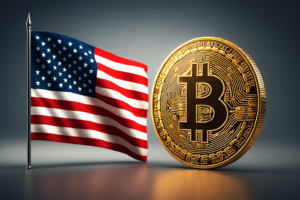As tensions between global superpowers escalate, semiconductors, those tiny chips powering everything from smartphones to AI, have become the beating heart of a new tech cold war. The US has tightened export restrictions to curb China’s access to cutting-edge chip technology, aiming to protect its own innovation edge. Nvidia, whose high-performance GPUs are essential for AI development, has been caught in the crossfire, its China-bound exports increasingly restricted. In response, China is ramping up domestic production and investing billions to achieve chip independence.
The chip war is no longer a quiet trade dispute, it’s a global battle shaping the future of innovation, sovereignty, and AI dominance. As superpowers recalibrate their strategies, both the US and China are investing heavily, innovating fiercely, and weaponizing technology in new ways.
From AI to national security, the future of technology is being reshaped. So, where exactly will the chips fall?
Chinese Efforts
Meanwhile, Chinese efforts to curb the country’s dependence on Western-owned technology continue. End of July, Chinese AI companies announced two new industry alliances, with the aim of developing a domestic ecosystem that lessens dependence on foreign tech while the country copes with US export restrictions on advanced Nvidia chipsets. According to Reuters, Chinese firms have been frantically trying to buy Nvidia H20 AI chips, as the company revealed plans to resume sales to the mainland days after its CEO met Trump.
According to Reuters, China plans to issue guidance to encourage the use of open-source RISC-V chips nationwide for the first time. Also, Chinese companies are bringing up orders for Nvidia’s H20 AI chip due to rising demand for DeepSeek’s low-cost AI models.
In May, China set up its third planned state-backed investment fund to boost its semiconductor industry, with a registered capital of US$47.5 B, according to a filing with a government-run companies registry. China’s largest chipmaker SMIC became the No. 3 foundry in the world, Counterpoint says.
By June last year, China was far ahead of other countries in generative AI inventions like chatbots. As per UN data, China was filing six times more patents than the US. According to Reuters, China’s ByteDance was working with US chip designer Broadcom to develop an advanced AI processor, a move that could have helped TikTok’s owner secure sufficient supply of high-end chips amid US-Sino tensions.
There isn’t a way to sneak past these restrictions either. October last year, Taiwan Semiconductor Manufacturing Company notified the US that one of its chips had been found in a Huawei product after tech research firm TechInsights took apart the product, revealing a possible violation of export restrictions on the Chinese company.
US Puts the Squeeze On
In June, the US government announced wider sanctions on the sale of semiconductor chips and other goods to Russia, with the goal of targeting third-party sellers in China.
The US isn’t imposing these restrictions without gains. Last year, semiconductor sales in the Americas outpaced those in China for the first time in at least five years, according to data compiled by the Semiconductor Industry Association. In fact, last year, Goldman Sachs and Citigroup lowered their full-year projections for China’s economic growth to 4.7%, after the world’s second-largest economy’s industrial output slowed to a five-month low in August.
US Chip Efforts
US efforts to win the semiconductor race are on. The US government has been investing in chip research. The Biden Administration opened US$285 M funding for ‘digital twin’ chip research institute last May.
Last August, the US Commerce Department said it planned to award US$50 M to HP to support the expansion and modernization of an existing company facility in Oregon that will boost key semiconductor technologies. The Department was also giving Texas Instruments as much as $1.6 billion in direct funding to support the construction of three new domestic facilities.
NVIDIA Slays…
Meanwhile, what of Nvidia, the chip making giant being pulled and pushed across the globe?
Nvidia has been slaying it. This year, the chip giant beat quarterly sales expectations as customers stockpiled its AI chips before fresh US curbs on China exports took effect. In November, Elon Musk’s xAI raised up to $6 B to purchase 100,000 Nvidia chips for its Memphis data center.
In May, NVIDIA announced its quarterly revenue for FY25 Q1, reporting a record-breaking 629% year-over-year increase, with revenue up 261.11% ($26 billion), fueled by advancements in generative AI. The company’s data centre revenue alone was US$22.6 B, another record-breaker, up 23% sequentially and 427% YoY, owing to the continued robust demand for the NVIDIA Hopper GPU computing platform across data centres, cloud providers, and enterprise customers.
In the earnings call, Huang said that the company plans to build a new chip every year. “I can announce that after Blackwell, there’s another chip. We’re on a one-year rhythm,” he added, saying that the Blackwell platform is in full production and forms the foundation for trillion-parameter scale generative AI.
NVIDIA’s continuous innovation has kept its competitors in check. As they attempt to catch up on one product, the company already moves to the next, maintaining its technological and competitive edge.
Last July, Nvidia was working on a version of its new flagship AI chips for the China market that would be compatible with current US export controls.
…But It’s a Balancing Act
However, the US curbs are predicted to slice off US$8 B in sales from Nvidia’s current quarter. Recent US restrictions on high-tech exports have caused Nvidia to lose market share in China as it withdraws chips and designs inferior alternatives compliant with evolving US policy. Last May, Nvidia had to slash price of its most advanced artificial intelligence chip, underlining the challenge the chip giant faced in China market amid US sanctions.
Cloud computing giants like Microsoft and Alphabet’s Google have indicated cuts to AI spending. This leads to the fact that Taiwan’s tech ecosystem is crucial for Nvidia’s growth.
Nvidia CEO Jensen Huang revealed that the company aims to expand its AI market grip through NVLink Fusion, which lets companies to plug custom chips into Nvidia’s AI infrastructure, transforming it into a platform on which others can build.
Chip Market Analysis
The US is trying its best to hold on to its chips. The US does have some cause for concern. According to Reuters, public tender documents show that state-linked Chinese entities are using cloud services provided by Amazon or its rivals to access advanced US chips and AI capabilities that they cannot acquire otherwise.
The US has been facing some flak on the chip front at home too. Apparently, chip makers building factories in the US face uncertainty on how hard tariffs will hit them. ASML, one of the world’s biggest suppliers of chip-making equipment warned that it may not achieve any growth in 2026.
China is still at the top of the chip market, but also somewhat worried. According to Reuters, Chinese tech giants like Huawei and Baidu as well as startups have been stockpiling high bandwidth memory semiconductors from Samsung Electronics as the US curbs on exports of the chips to China become real.
In fact, Chinese exports growth were at their slowest pace in three months in July, as the country pushed up chip supplies before US tech curbs bring up imports. China actually missed expectations in July making the manufacturing sector a bit wobbly.
Even now, as US restrictions drive chip customers to non-Chinese chips, Vietnamese chip makers are gaining.
As per Reuters, Nvidia will also launch a new AI chipset for China at a much lower price than its H20 model, which has been restricted by the US. Mass production plans are expected to begin as early as June.
It isn’t just Nvidia that is facing the music. ASML, the computer chip equipment maker that has been hit by successive waves of US-led restrictions on exports to China, said in its annual report that uncertainty over export controls had weakened customer demand in 2024.
The chip war is no longer a quiet trade dispute, it’s a global battle shaping the future of innovation, sovereignty, and AI dominance. As superpowers recalibrate their strategies, both the US and China are investing heavily, innovating fiercely, and weaponizing technology in new ways. Meanwhile, companies like Nvidia find themselves in a high-stakes balancing act, caught between regulation and demand. In this era of silicon geopolitics, where the chips fall may well determine who leads the next technological age.












